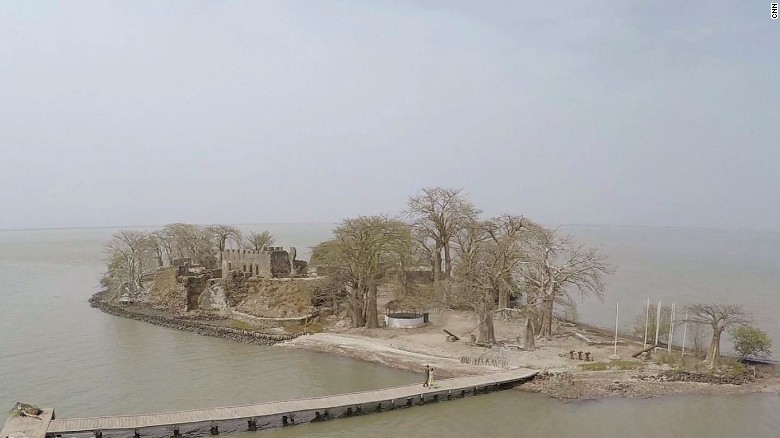'Don't call me Toby:' The story of the slave who fought back
Once known as James Island, Kunta Kinte Island was a holding ground for captured slaves before they were shipped to America. The Island is named for its most famous slave, who was later immortalized in the book (and then mini-series) ROOTS.
Kunta Kinte Island sits at the mouth of the Gambia River. Though tiny -- it is barely big enough to house some ruins of its past and a baobab grove -- the role it has played in world history has been large indeed.
Because
the Gambian river runs like an artery from the Atlantic into Africa, it
was a crucial passageway for the slave trade. At its height, an
estimated one in six West Africans slaves came from this area.
The
island is also famous for its namesake: Kunta Kinte. Kinte was a
character in Alex Haley's Pulitzer Prize-winning novel Roots, and later
of a miniseries by the same name. Haley claimed his book was based on a
real-life man who was captured into slavery in the nearby village of
Juffureh, and that he himself was Kinte's great, great, great, great
grandson.
In Haley's story, Kinte, who
was sold to an American slave owner, resisted both his enslavement and
the name "Toby" that his owner imposed on him. After his fourth attempt
at escape, the slave catchers gave him a choice: Be castrated, or lose
half a foot. Kinte chose the latter (a fortunate choice for the
descendants who would later immortalize him).
There
have been disputes over Haley's claims of descendancy and his account
of Kinte's life, which he claimed were gleaned from research and his
family's oral tradition. Expert genealogists have pointed to records
that show "Toby" died at least five years prior to the birth of Kizzy,
Haley's great, great, great grandmother. After a legal battle, Haley
also admitted that some of the material was sourced from Harold
Courlander's book The African.
Regardless,
Kinte's story hit a nerve on both the West African and American coast.
The mini-series based on his life attracted a record-breaking 170
million viewers, and is credited by some as invoking a change in
American attitudes to slavery -- a turning point in the post-civil
rights struggle.
For
locals on the island, Kinte was very much a real man. Gambian historian
Lamin Ceesay showed Inside Africa host Soni Methu around the island,
pointing towards a faded ad selling slaves from the vessel the Lord
Ligonier.
"That was the boat that took Kunta Kinte from James Island to Goree (Senegal) and then crossed to Annapolis," he told her.
There are others that claim descendancy with Kinte. Aja Mariama says she is Kinte's seventh-generation grandchild.
"When
Kunta was captured, his father wrote on a piece of paper that until the
end of times, his son's name will not be forgotten. He was a warrior.
He was brave," says Mariama.
Last month, A&E Networks announced it will reboot Roots,
with Laurence Fishburne playing Haley and LeVar Burton -- who played
Kinte in the original series -- co-producing. Lamin Jatta, supposedly a
ninth-generation descendent of Kinte, is working as a series advisor.
The series will ensure that another generation know the story of Kunta
Kinte. It looks like Kinte's father was right.

Comments
Post a Comment